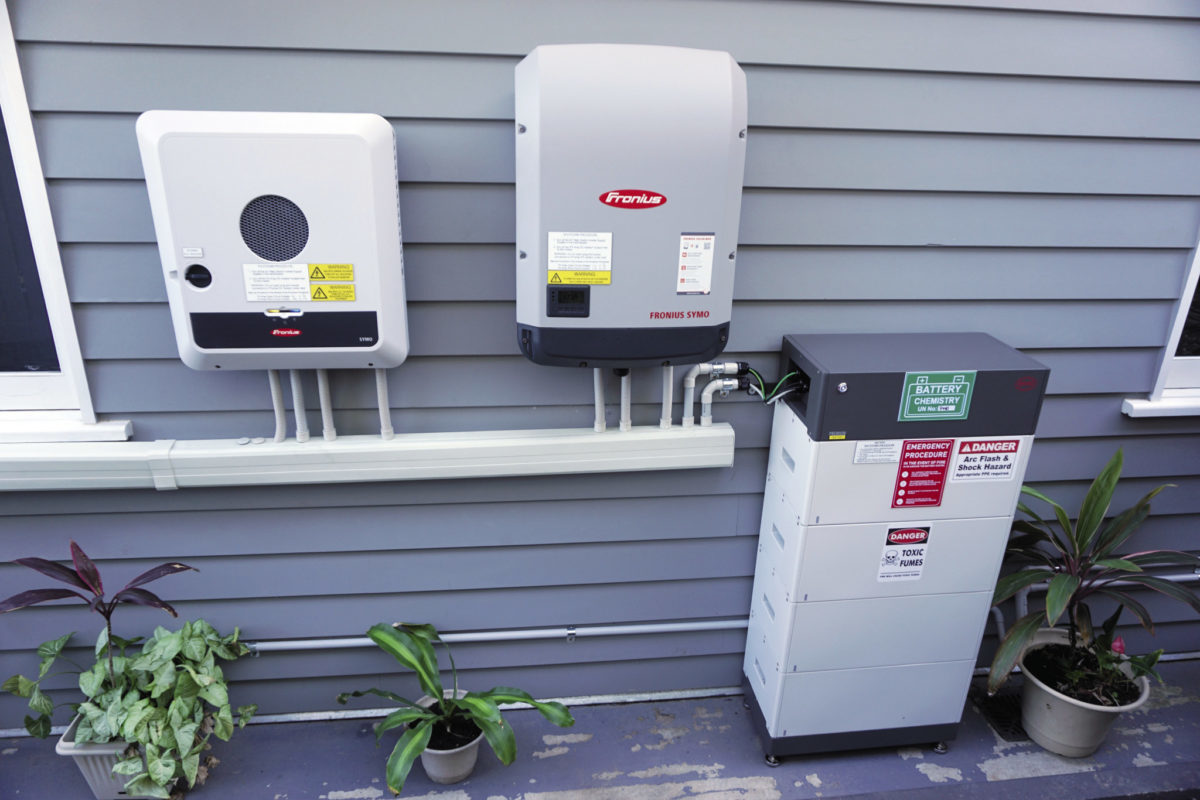More than 300 Territorian homeowners, businesses, and not-for-profit organisations have applied for the Northern Territory (NT) Labor Government’s Home and Business Battery Scheme (HBBS). 230 local businesses have already received their vouchers.
Many people would be aware of the NT’s plans regarding large-scale energy storage, including putting up $30 million toward a megabattery with the aims of managing fluctuations in the Darwin-Katherine grid caused by increasing levels of behind-the-meter solar, reducing carbon emissions, and form an integral part of the Australia-ASEAN Power Link (AAPL) system between the 10 GW Sun Cable Solar Farm and the unprecedented 3,750km underwater HVDC cable snaking its way along the ocean-bed from Darwin to Singapore.
However, the NT is also encouraging energy storage uptake at the small scale with the country’s most generous residential storage subsidy. The HBBS gives the opportunity to apply for a $6,000 grant to either buy and install a solar PV system with an eligible battery or inverter, or by and install an eligible battery and inverter to complement an existing solar system. The battery installations (smallest battery capacity allowed is 7 kWh) and the standard Jacana Energy feed-in-tarrif (FiT) rate of 8.3 cents per kilowatt hour (the rate was slashed to fund the program). The scheme is part of the NT’s push to reach 50% renewable energy integration by 2030.
NT Minister for Renewables and Energy, Eva Lawler, said that the NT Government wants “Territorians to have access to the latest and best technology as we build a stronger and more resilient power system for Territory households and businesses.”
The NT Government wants to continue to encourage the uptake of solar PV with battery storage because it contributes to grid stability and reduces power system costs by reducing demand for gas generation during evening peak periods.
“The HBBS $6,000 solar and battery vouchers will see even more Territorians choose the sun and lower power prices – and create more jobs,” said Lawler. “Local businesses and local families are benefitting from this scheme – whether it’s receiving the work now to install the PV and battery styles, or whether it’s a cost-saving measure in the future – this is a win-win for the Territory.”
Distributed storage uptake
In 2016, analysis from Morgan Stanley was perhaps the most optimistic regarding distributed storage Down Under, and the market has massively underperformed on these expectations. The Morgan Stanley analysis published a mid-range scenario, which would have seen around 1 million battery storage systems installed by 2020. Its optimistic scenario envisaged roughly double that, or one in five homes.
In contrast to these forecasts, today, IHS Markit puts cumulative installations at approximately 82,000 units in 2020, representing well over one in 100 Australian homes – a far cry from the Morgan Stanley optimism. Local Australian consultancy Sunwiz puts the cumulative figure even lower, at 73,000.
Of course, such figures still put Australia near the top of the global ladder. Nevertheless, programs like that in the NT are hugely important as the combination of solar PV and energy storage alleviates distribution constraints, promulgates the spread of virtual power plants (VPPS), another avenue for supplementary income, and of course, supports the broad uptake of such technology will only accelerate its progress and that of the larger energy transition.
Applications are open for the HBBS until November 30, or until the funding runs out (which is likely to be soon considering the initial outlay for the program was only $800,000).
This content is protected by copyright and may not be reused. If you want to cooperate with us and would like to reuse some of our content, please contact: editors@pv-magazine.com.









By submitting this form you agree to pv magazine using your data for the purposes of publishing your comment.
Your personal data will only be disclosed or otherwise transmitted to third parties for the purposes of spam filtering or if this is necessary for technical maintenance of the website. Any other transfer to third parties will not take place unless this is justified on the basis of applicable data protection regulations or if pv magazine is legally obliged to do so.
You may revoke this consent at any time with effect for the future, in which case your personal data will be deleted immediately. Otherwise, your data will be deleted if pv magazine has processed your request or the purpose of data storage is fulfilled.
Further information on data privacy can be found in our Data Protection Policy.